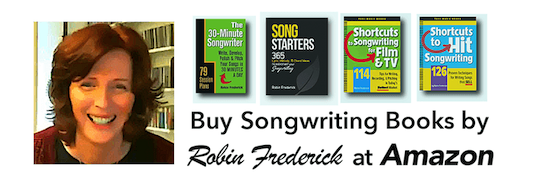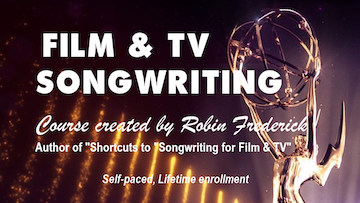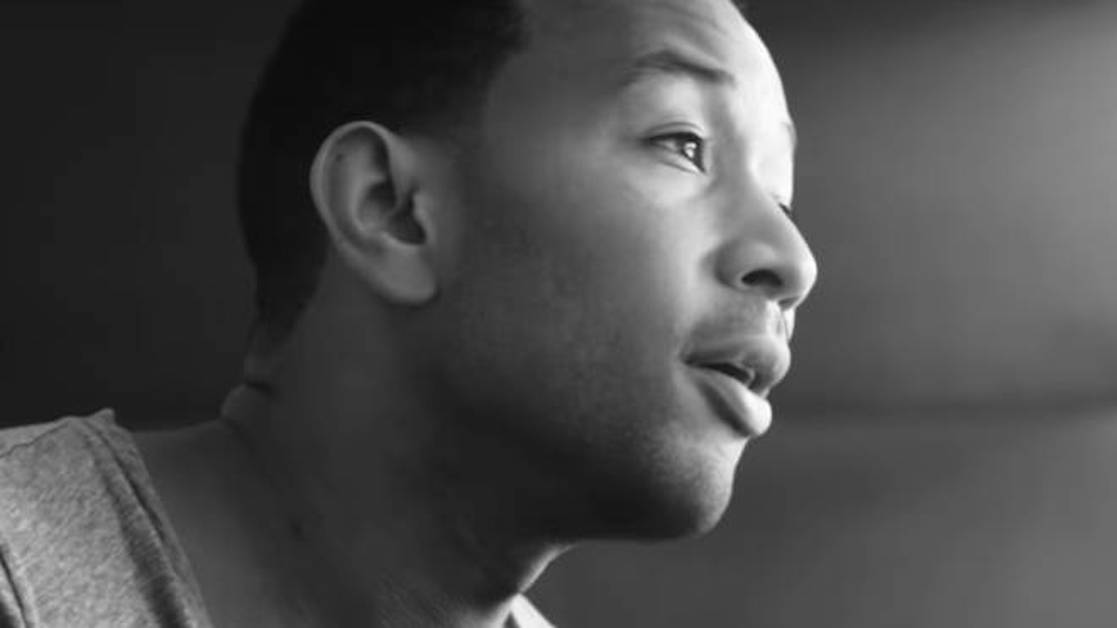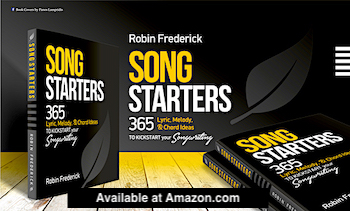“All Of Me,” recorded by John Legend, is a hugely popular piano/vocal love ballad that has been embraced by listeners around the globe. The song went to #1 on seven different Billboard charts in the U.S. and eleven countries around the world. The YouTube video has had over one billion views. (That’s billion with a “b.”) Proof that, even in this era of giant Dance/Pop extravaganzas, a simple song with an honest, emotionally moving lyric can hold its own.
Because the production is so bare bones, the song itself has to sustain the listener’s interest. That’s a challenge for any song, but especially a ballad. There are a number of simple but very effective lyric and melody techniques at work here, ones that you can easily adapt for use in your own songs.
“All Of Me” – John Legend
Recorded by John Legend
Writers: John Legend and Toby Gad
TECHNIQUES TO HEAR AND TRY
- Write a ballad melody that keeps listeners engaged.
- Give a personal lyric universal appeal.
- Introduce your characters early.
Listen to the song. Read the lyrics.
Read the lyrics here: All Of Me – John Legend
Genre/Style: Pop/Adult Contemporary
(What is a genre? Watch this video.)
“All Of Me” is a ballad in the Pop genre. The memorable, easy-going melody drops it right into the heart of the Adult Contemporary side of Pop. As its name implies, the Adult Contemporary format features songs that appeal to a broad adult age range, from 25 to 55. Surprisingly, this melodic ballad with minimal production also topped the Pop and R&B charts.
There’s a mix of influences here and it’s a little hard to tell who is influencing whom. Certainly this song reminds me of Adele’s huge hit “Someone Like You” but that song may have been influenced by John Legend’s own Neo-Soul hit of a decade ago: “Ordinary People.” And, let’s face it, everyone here is paying their respects to Lionel Richie.
Song Structure
This song has the same structure as most of today’s biggest Pop and Rock hits, yet it doesn’t really sound like one of those hits.
The structure is:
VERSE / PRE-CHORUS / CHORUS
VERSE / PRE-CHORUS / CHORUS
BRIDGE / CHORUS
VERSES: Verse 1 starts the song off with the line “What would I do without your smart mouth?” It’s a great opening line, immediately drawing the listener into the song with an intriguing question and a glimpse into a complex and very realistic relationship.
Verse 2 begins with “How many times do I have to tell you, even when you’re crying you’re beautiful, too.” Another unusual statement that makes us curious to hear more.
PRE-CHORUS: The pre-chorus begins “My head’s under water.” The lyric sets up the positive emotion of the chorus by letting us know the singer feels he might be in over his head but “breathing fine.”
CHORUS: The chorus starts with the line “I give you all of me.” It’s an extension of the title “All Of Me” and completes the thought, a great technique for creating a strong line at the beginning or end of a chorus.
BRIDGE: “Cards on the table” is the line that launches the bridge. The high melody line gives the song a peak moment, as does the lyric. “Cards on the table / We’re both showing our hearts.” Everything is out in the open now.
INTRO: Notice the short intro here. With just a piano to carry the track, it’s a good idea to get to the vocal. There are four bars of piano, then a couple of beats before the vocal melody enters on Beat 3.
– TRY IT NOW –
Listen to the song and note where each section begins. Identify the verse, chorus, pre-chorus, and bridge sections. Print out the lyrics and try singing along.

Lyrics
This is a wonderful example of a personal song with universal appeal. John Legend wrote the song for his future wife. Like Legend, most songwriters write from their own experiences and often write for personal occasions: a wedding, a friend’s birthday, a memorial service. Making the song speak to a mainstream audience – millions of listeners who are complete strangers – is the challenge songwriters face.
Here, Legend paints a picture of a relationship that is wry, honest, and complex. Through his description of his partner we feel we get to know her. The emotions throughout the song feel authentic. In many ways, the song could apply to any listener in a love relationship.
Legend had a co-writer on this song, the hit producer/songwriter Toby Gad, who may have helped open up the lyric to a wider audience. This is a great reason to collaborate. Co-writers can let you know when you’re getting too involved in telling your own specific story.
INTRODUCE THE CHARACTERS & SITUATION: One of the best ways to get your listeners invested in your song is to tell them something about who is involved. Say something interesting about them in the first couple lines. Look at the first three lines of this lyric:
What would I do without your smart mouth
Drawing me in and you kicking me out
You got my head spinning, no kidding, I can’t pin you down
You get a pretty good picture of his partner right there. She’s unpredictable, she keeps him off balance and, in a fresh twist, he finds that he likes it. He likes the challenge, the smart quips, the unexpected side of their relationship.
In verse 2 (“How many times do I have to tell you…”) we continue to find out about these two people and things get a little more serious. She’s vulnerable and he gives her his support. He calls her his downfall and a distraction, yet she’s also his muse. Again, we see the complexities of this relationship and it adds to the sense of authenticity.
BONUS TIP: Notice how this song lyric deals with one of the most common themes in songwriting – being in love – yet the writers have found fresh ways to say things. If you find yourself using familiar phrases and clichés in your lyric, imagine yourself inside the situation, observe your feelings, what’s happening, and who is there. Try to capture the essential, expressive details and convey them to listeners.
GIVE LISTENERS THE INFORMATION THEY NEED: The pre-chorus sets up the chorus lyric in a way that’s fresh and original.
My head’s under water but I’m breathing fine
You’re crazy and I’m out of my mind
Just before the strong, positive statements in the chorus, we learn that these two people are well matched.”You’re crazy and I’m out of my mind.” They’re equals in this relationship. It helps to set up the “all of you / all of me” balance in the chorus lines.
The function of a pre-chorus is to deliver the listener to the emotional message of the chorus. Check your chorus lyric to see if the listener needs any additional information or a little emotional push before you deliver that big first line.


CREATE A SOLID CHORUS STRUCTURE: The chorus lyric is pure feeling. The opening line states the heart of the song: All of me loves all of you. The lines that follow support and define the opening line:
Love your curves and all your edges
All your perfect imperfections
This pattern in very common in choruses: Open with a strong, emotional line then follow it up with lines the expand, define, or add to our understanding of it. It gives listeners a chance to linger on the central emotion of the song and really take it in.
The payoff line—the last line of the chorus—is the one that tends to linger in the minds of listeners after the song is over. Make it something you want listeners to take away with them. In this case, the line reinforces the sense of equality in the relationship and the idea of being an inseparable pair—all of me / all of you.
‘Cause I give you all of me and you give me all of you.
RHYMES: There are a lot of near rhymes in this lyric that are surprising and fun: spinning/kidding, edges/imperfections. And then there are perfect rhymes we don’t hear very often like muse/blues. In a slow song like this one, the language is important. Listeners have plenty of time to hear it and take it in. Be sure to give them something entertaining and worth listening to.
Even a hit might have a weak spot
Both John Legend and Toby Gad are strong songwriters. There are a couple of lines in the chorus that I think they could have worked on a little harder but maybe that’s just my opinion. See what you think. The lines are:
You’re my end and my beginning
Even when I lose I’m winning
I’ve heard these familiar phrases and rhymes before. Haven’t you? Lines like these have lost their emotional punch through overuse. Listeners just don’t feel them anymore. No one said that hit songs have to be perfect and obviously this couplet hasn’t bothered people too much. But listen to the chorus yourself and see if you don’t feel the energy drop just a little bit in that spot.
– TRY IT NOW –
Write a first verse lyric that introduces a relationship, character, or situation in an intriguing way. Make listeners want to hear what’s going to happen next. Add a chorus that focuses on the emotional heart of your song with a payoff line you want listeners to remember.
The melody is a real standout. It’s what gives this song its power and forward thrust, sustaining interest and keeping things moving. For a mid-tempo ballad to make it to the top of today’s music charts, a melody with the momentum of a freight train is a must-have!
ELIMINATE PAUSES TO INCREASE MOMENTUM: Right away, the verse melody has plenty of forward thrust. Listen to the first verse and notice how short the pauses are at the ends of phrases. Actually, there aren’t any pauses. The singer just has time to catch a breath after “your smart mouth” before the next line kicks in: “Drawing me in and you kicking me out.” The same thing happens again; there’s no pause before “You got my head spinning.”
Most songs have a fairly relaxed, conversational melody in the verse with plenty of room to breathe between lines. This one starts off determined to hold onto the listener’s attention and continues to do so through the pre-chorus and into the chorus. There’s only a one-beat pause in the transition from the pre-chorus to the chorus. The steady pace keeps up until the end of the chorus when the singer finally gets a break!
If you want a ballad to make it on the Pop charts, this kind of momentum is a very good thing to have. Listeners just don’t tolerate empty space very well – and if the singer isn’t singing, it’s empty space.
USE PHRASE PATTERNS: This whole song relies on simple phrase patterns to make it memorable. The verse melody features a pattern that’s very appealing: two long phrases, then two short ones, then a phrase to wrap it up. The pre-chorus features a two-line pattern: just two long descending phrases of equal length.
The chorus, too, has a clear pattern. Everything is in two’s here. The lyric changes but the melody phrases keep coming in pairs. Once again, this song demonstrates strong craftsmanship even as it expresses the singer’s personal feelings and moves listeners emotionally.
SAVE YOUR HIGHEST NOTES FOR THE PAYOFF LINE: The melody reaches the high notes of the song on the closing lines of the chorus with the singer breaking into falsetto. This is a little unusual. The high notes usually occur earlier in the chorus, then descend down to the conversational verse melody range for the last line. The payoff line here creates a moment of vulnerability and emotion that makes for a memorable hook.
-TRY IT NOW –
Use the lyric ideas you came up with earlier and write a melody using these techniques. If you’re having trouble eliminating pauses, learn to sing “All Of Me” to get a feel for the melody style, then try again. Or, rewrite a song of your own. Clean up the melody patterns so they’re easy to hear, and eliminate pauses by extending lines.
Production
It’s been fascinating to see so many bare-bones productions make it to the top of the charts. John Legend’s “All of Me,” “Royals” by Lorde, and “Someone Like You” by Adele all went to No. 1 and stayed there for a substantial length of time.
The challenge is to keep the track interesting and much of that rests on the song itself. In all three cases the melody featured a variety of line lengths and phrase starts. Vocal pauses were kept to a minimum in the pre-chorus and chorus. The lyric drew the listener into the situation and characters right from the beginning and sustained interest with striking images and fresh rhymes.
CREATE A DYNAMIC BUILD: These productions, even though simple, do have dynamic builds. “All of Me” has a subtle choir pad that sneaks in on the second chorus and sticks around. Both “All of Me” and “Royals” use a Vocoder-like vocal stack to build up the track as it moves forward. In “All of Me” it shows up in the second chorus and becomes obvious on the final chorus. At least some of it is clearly produced by an electronic effect, not actually singing the parts. There are several plug-ins and outboard boxes on the market that create this effect. You can make them sound more or less natural depending on what you’re aiming for.
– TRY IT NOW –
Learn to play and sing this song or sing along with the recording and keep time by tapping your foot or clapping. The song has a big vocal range so you may need to talk/sing part of it. You’ll find the chords with lyrics here.
Pay special attention to the way the verse melody eliminates pauses and where the phrases start. Notice how the chorus has a more familiar feel and stretches out the important words to emphasize them.
Write a ballad-style verse and chorus on piano or guitar. Play with the start times of your melody phrases. Use a pattern of long and short phrases. But most important, eliminate those long pauses between lines that let listeners fall asleep. Keep the momentum going by lengthening lines or adding extra words or starting phrases early.
READ MORE SONG GUIDES ON THIS SITE and learn from the hits!

